Blog post by Susan W. Greene, MA ’94
In the 1930s, Cornell University’s College of Home Economics received an amazing offer. The head of the Department of Textiles and Clothing, Professor Beulah Blackmore, was contacted by a Cornell alumna, Ida Langdon (MA 1910, PhD 1912) wondering whether the College would be interested in the Victorian clothing stored for decades in the attic of the Langdon mansion in Elmira, NY. The family was not only eminent locally; it also was associated by marriage to one of America’s national treasures: Samuel Clemens, also known as Mark Twain.
Sam wed Ida’s father’s sister, Olivia Louise Langdon in 1870. Sam outlived three of his four children and his wife; in 1910 his turn came. Circumstances had led to the wide dispersal of Clemens family possessions before and after his death, such that until recently, none of Olivia’s dresses were known to exist.
Ida’s mother had stored her own fine but passé clothing in the Elmira attic with great care. After her mother’s death, Ida (who had two siblings) was largely responsible for emptying the family mansion to prepare it for sale. With no one to tell her otherwise, she assumed all the clothing was that of her immediate family, and as such it was offered to and accepted gratefully by Professor Blackmore on behalf of the College, and added to the growing textile and apparel collection.
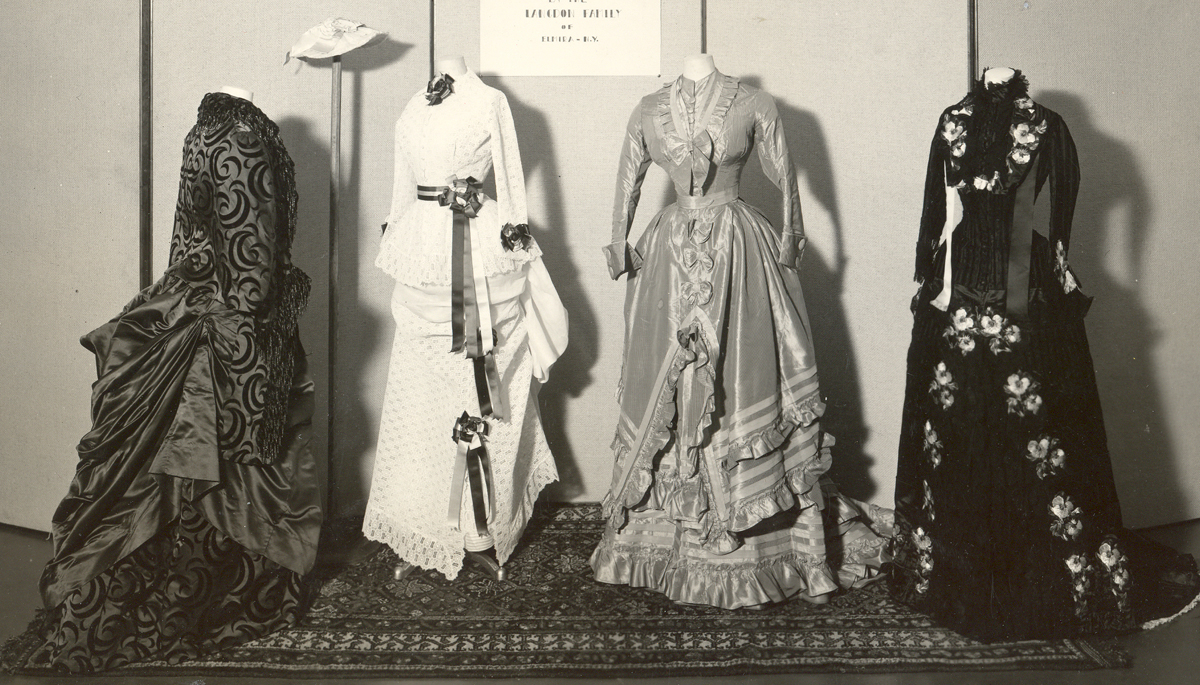
The Pansy Dress (far right) in an early CCTC exhibition display curated by Professor Beulah Blackmore.
The gift included many fine items of interest, including a blockbuster 1880s dress made of black striped silk gauze laid over black satin, trimmed with black hand made lace, satin ribbon streamers, and a cascade of embroidered pansies—yellow, lavender, purple and green. It has always been an honored piece in the collection, even to the point of acquiring a name: the Pansy Dress. I made its acquaintance in 1992 when I appeared in the department to undertake my master’s degree studies. I was conscripted to help remove it from a concluded exhibition at the Johnson Museum, where it was clearly regarded as a “Great Treasure,” as well it might be.
During the subsequent two decades of my association with the collection as a volunteer assistant, I became fairly familiar with most of the other Langdon items. While I served as consultant to the Chemung Valley History Museum (in Elmira), helping to catalog their costume collection, we came to an 1880s lilac satin dress that made my jaw drop. It was so like some of the Langdon dresses at Cornell, especially the Pansy Dress. Sure enough—it had Langdon/Clemens provenance from a different direction, unfortunately a bit iffy. I recommended getting the connection sorted out by an intern sometime. I was not interested in the 1880s.
Predictably, I was pulled into the vortex myself. It led to the self-publication of a monograph, On the Trail of a Clemens Dress. I never expected to find so much of interest represented by a couple of heaps of satin and lace—it revealed tentacles of history, something for everyone. I presented a few papers on the subject and sensibly dubbed the Elmira one the Lilac Dress. Lynne Bassett, a well-known costume and textile historian, featured the two dresses when she mounted a major, prize-winning exhibition, Modesty Died When Clothes Were Born, for the Mark Twain House & Museum in Hartford, Connecticut. Because of the overwhelming evidence, the two dresses (the Pansy Dress and the Lilac Dress) have been accepted as having belonged to Olivia (Livy). Elmira College, with which the Langdon family was intimately connected, now boasts not only a stained glass window, but also a sculpture honoring Livy wearing the Lilac Dress.
Most recently I was pleasantly surprised to be contacted by a leading Twain collector/dealer, Robert Slotta, who purchased a black dress years ago from Twain descendants. It has secure provenance as one of Livy’s garments but date and significance were not identified. We believe it was very likely worn in mourning for Susy Clemens in 1896. Making the long story short, it has enlarged the little rank of Livy’s dresses, each one redolent of Twain history and character. Mr. Slotta has prepared a very interesting and persuasive account of its probable historic importance. Without the research I was prompted to pursue on the other two dresses, we could not have compared notes and made this observation.
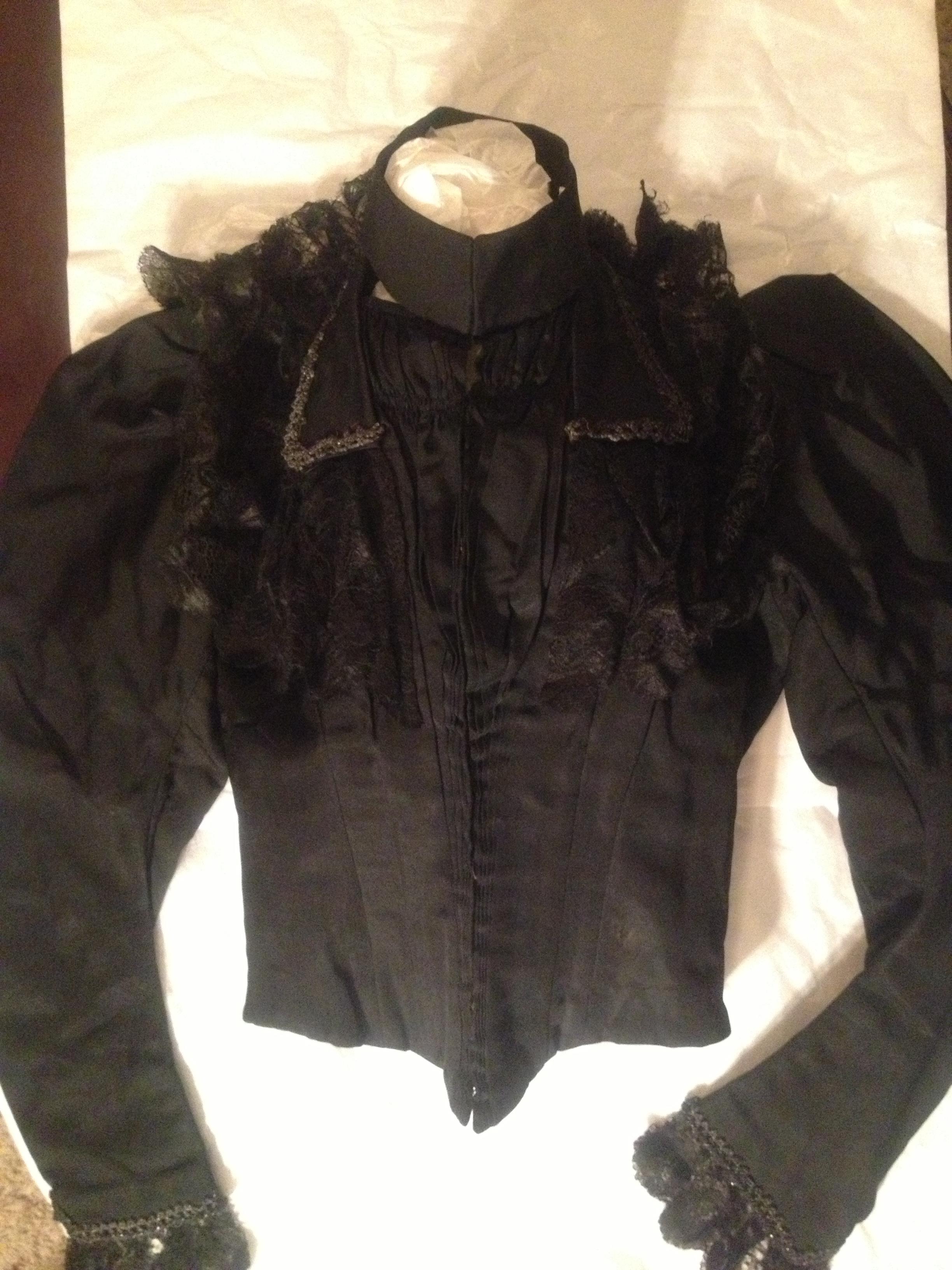
Bodice of another dress likely worn by Olivia Langdon while she was in mourning for her daughter Susy.
For a detailed account of the method of constructing these apparently secure hypotheses, the reader will have to refer to my monograph. I will merely note here that I was drawn into history that affected the world, but also into local history; I considered the health and reform movements, fashions of the day, interior design, artistic and literary movements, and of course, family history. And being a Cornellian, it meant using a tape measure to make very specific—and telling—empirical observations. These were aided by groundbreaking research by Professor Blackmore’s successor, Elsie Frost McMurry, in her digital book, American Dresses 1780-1900: Identification and Significance of 148 Extant Dresses. Collaboration with other scholars is a foregone conclusion in the process.
Discovering these three intimate witnesses to Livy’s life has made the Twain legend all the more poignant and palpable. And I think I know of a fourth one not yet identified as such in Cornell’s Langdon collection. Its connection will be harder to prove; but after studying these three, and getting to know Sam and Livy a little better, I harbor a suspicion it was worn by Livy while carrying her ill-fated son Langdon. It is certainly plausible that Sam and Livy—quintessentially passionate mates and parents given to preserving the memory of precious life landmarks—would have saved such a memento along with the three identified here.
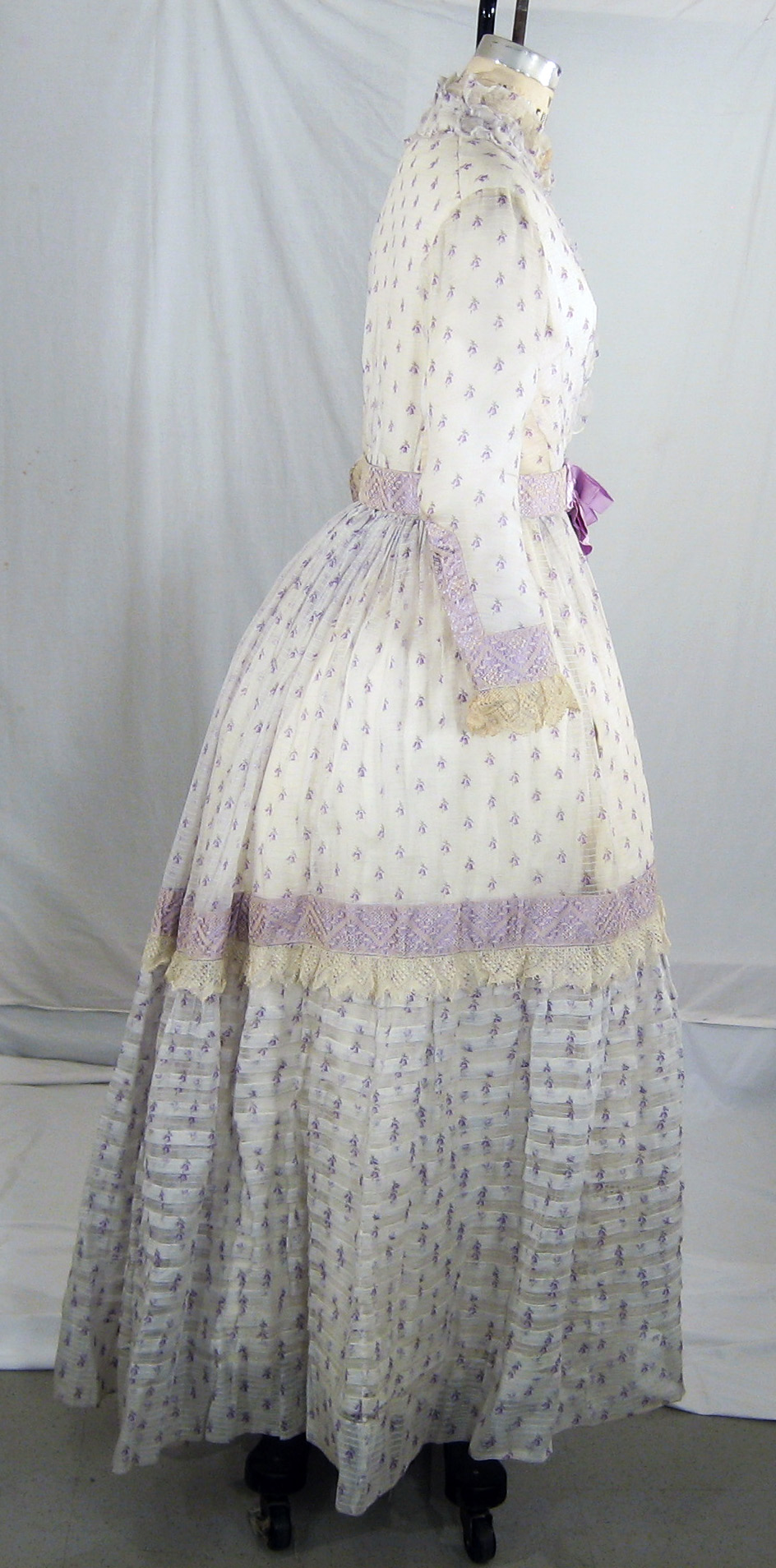
Another gown in the Cornell Costume & Textile Collection, likely worn by Olivia Langdon while carrying her son Langdon
Susan Greene received a BFA from the School of the Art Institute of Chicago and a MA from Cornell University. She began working in the Cornell Costume & Textile Collection in 1992 and continues to volunteer in the CCTC. She is the author of numerous articles and monographs and recently published the award-winning book, Wearable Prints, 1760-1860: History, Materials, and Mechanics.


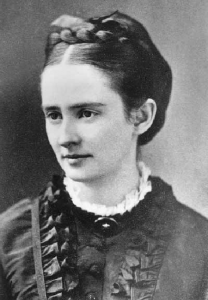
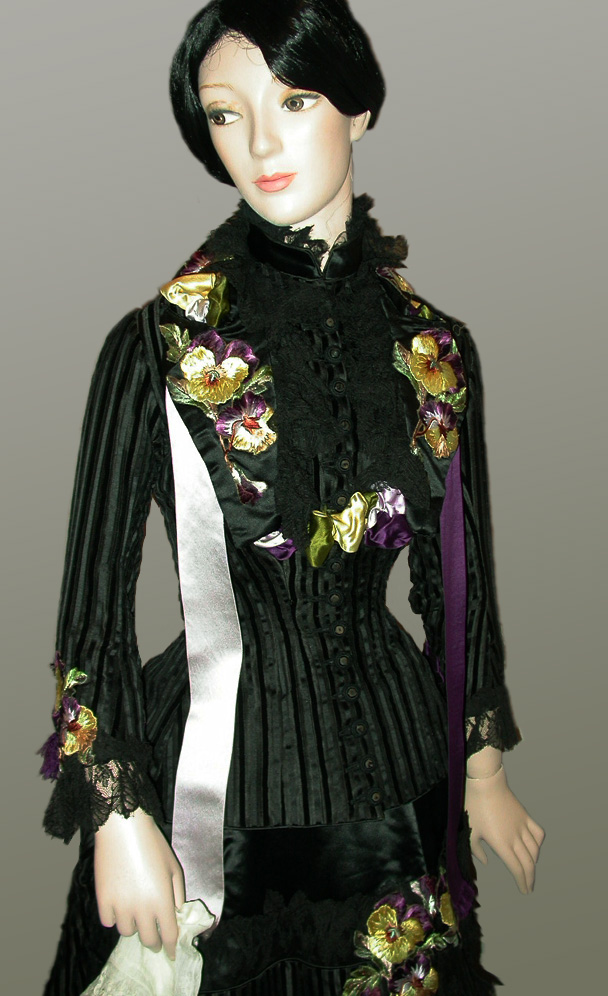

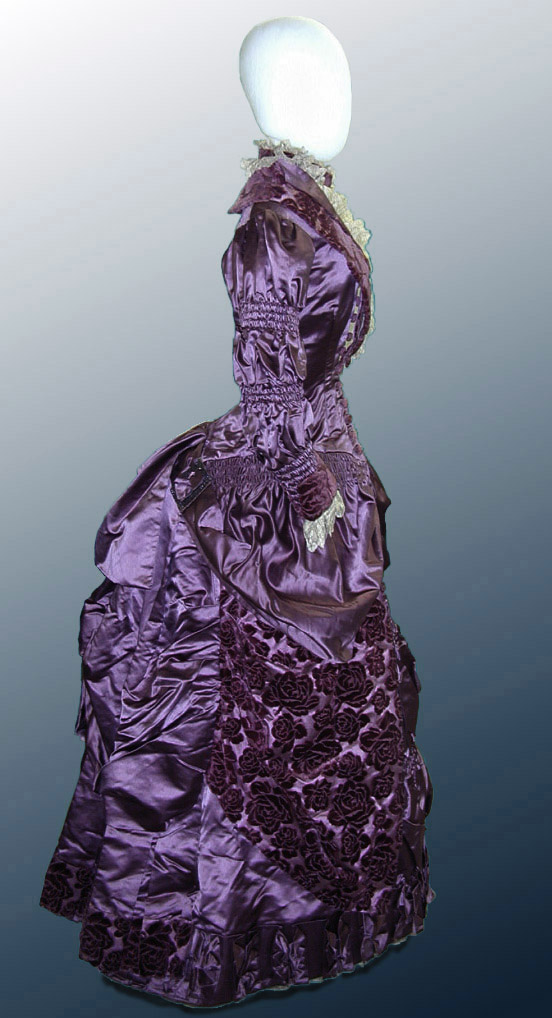
Beautiful, Susan! I appreciated and enjoyed reading your article; and the dresses, of course,
are magnificent. Keep in touch, thanks again.